The bus arrived in the Blagoevgrad station earlier than scheduled. The city of about 70,000 sits just over an hour south of Sofia, near Bulgaria’s western border with Macedonia. Blagoevgrad was to be the location of the first of three kukeri festivals I attended in January and February. Though I didn’t encounter a single kaval at these events, observing them and doing some additional reading helped clarify for me certain elements of Bulgarian history and culture as they relate to folklore. The three posts in this series will discuss my experiences at each of these festivals and how they relate to issues like political structures, gender, music, race, and nationalism. Though I arrived at many of the observations and questions described here on my own, my understandings and analyses have been greatly influenced by Gerald Creed’s excellent book on the subject, Masquerade and Postsocialism: Ritual and Cultural Dispossession in Bulgaria (2011).
The information on Blagoevgrad’s municipal website indicated that the gathering point for the beginning of the parade would be 11:00 at the train station, so I headed straight there. I wasn’t sure exactly what to expect. I hadn’t yet read Creed’s book, so most of the knowledge I had about kukeri came from a presentation I had attended at EEFC’s Mendecino Balkan Camp. The presentation had dealt with the village fertility ritual, in which variously costumed men proceed from house to house, clanging a set of bells strung around their waists, knocking on doors and staging interactions with residents to guarantee villagers good fortune in the next year’s harvest. But Blagoevgrad is a city. What would such a procession entail there, since there are obviously far too many residences to visit every one?
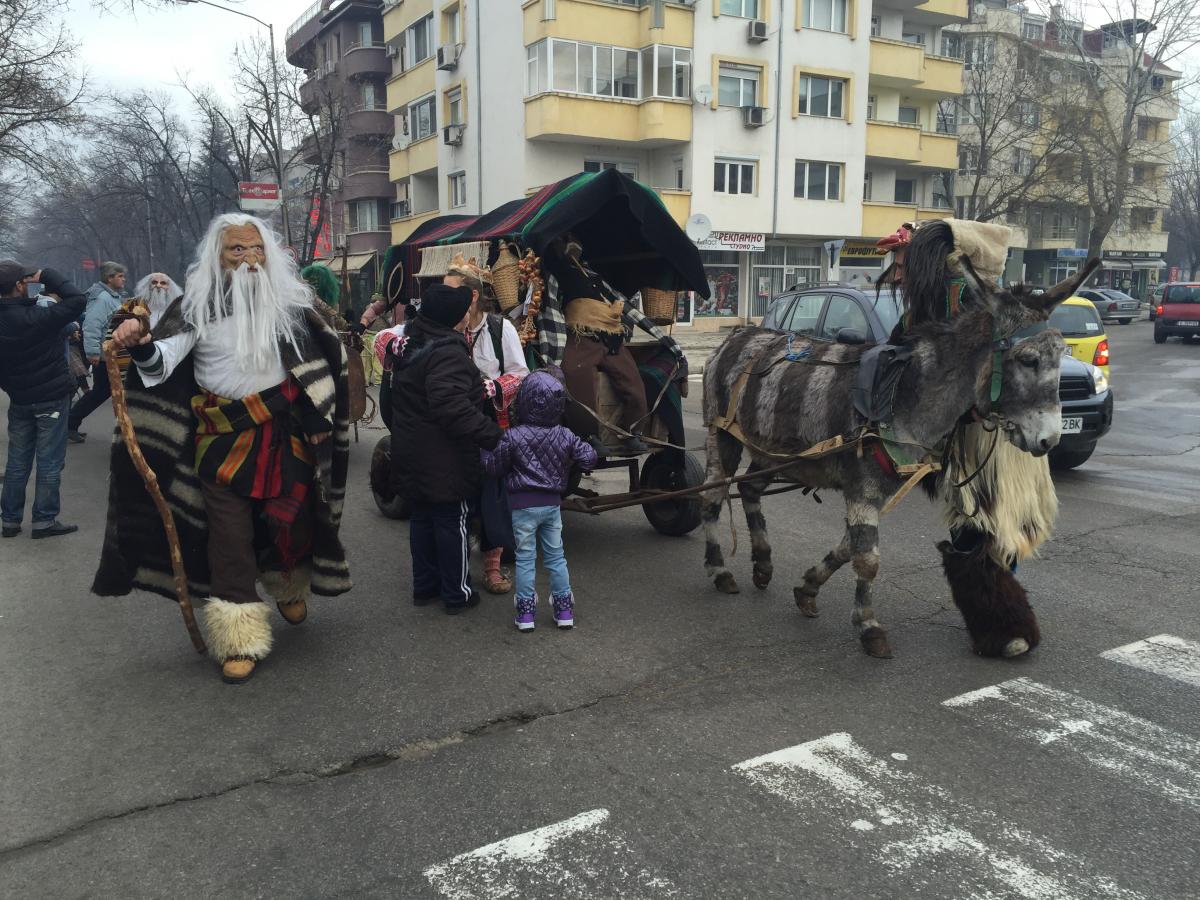
Since those wearing the fur were not disguised behind masks, I soon noticed something surprising about their demographic – some of the younger participants were girls! Looking more closely, I realized that it was not only kids, but even many of the young adults who were women, which ran contrary to my understanding of the traditionally gendered ritual. Were these young feminists rebelling against the patriarchal order? That seemed a bit too optimistic of a conclusion, considering how strongly gender differences are emphasized in everyday life here. As I continued observing throughout the day, I reached the conclusion that it wasn’t just an anomalous group from a single nearby village defying gender stereotypes, but a widespread shift that must have been years in the making.
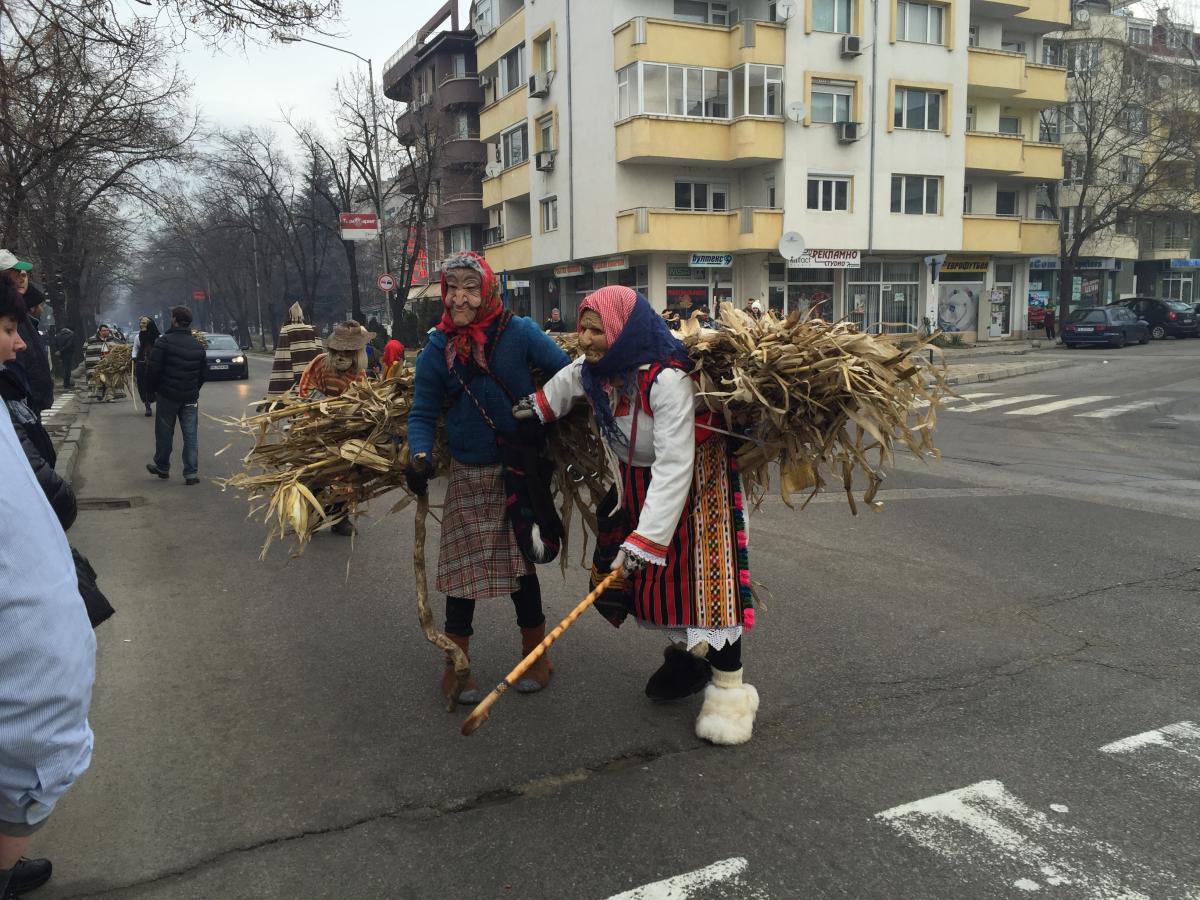
At one extreme, in traditional (pre-WWII) practices of some villages, only bachelors could participate in what was seen as a coming-of-age ritual (loc. 1041). In others, women were forbidden to leave their houses during the ritual as a precaution against the aggressive (read: violently sexual) masculinity excused under pretenses of ritual and alcohol (loc. 1102). So how did the kukeri ritual become one in which women can participate even in roles linked to the explicit symbols of masculinity described above? Creed cites three reasons for this transformation. Like in many Soviet-style regimes, the one in Bulgaria articulated an ideal of gender equality, exemplified by changes to folklore practice ranging from permitting women to play folk instruments to the inclusion of women in rituals like mumming. Second, after the waves of urban migration triggered by communism and “the changes” of 1989, and of international emigration following the latter, depopulation of rural areas made it necessary to include additional participants to ensure the ritual’s survival. Finally, since “Western” is often equated with “modern” and Western modernity at least pretends to promote gender equality, including women helps to “redefine these rituals as modern” (1289) to ensure 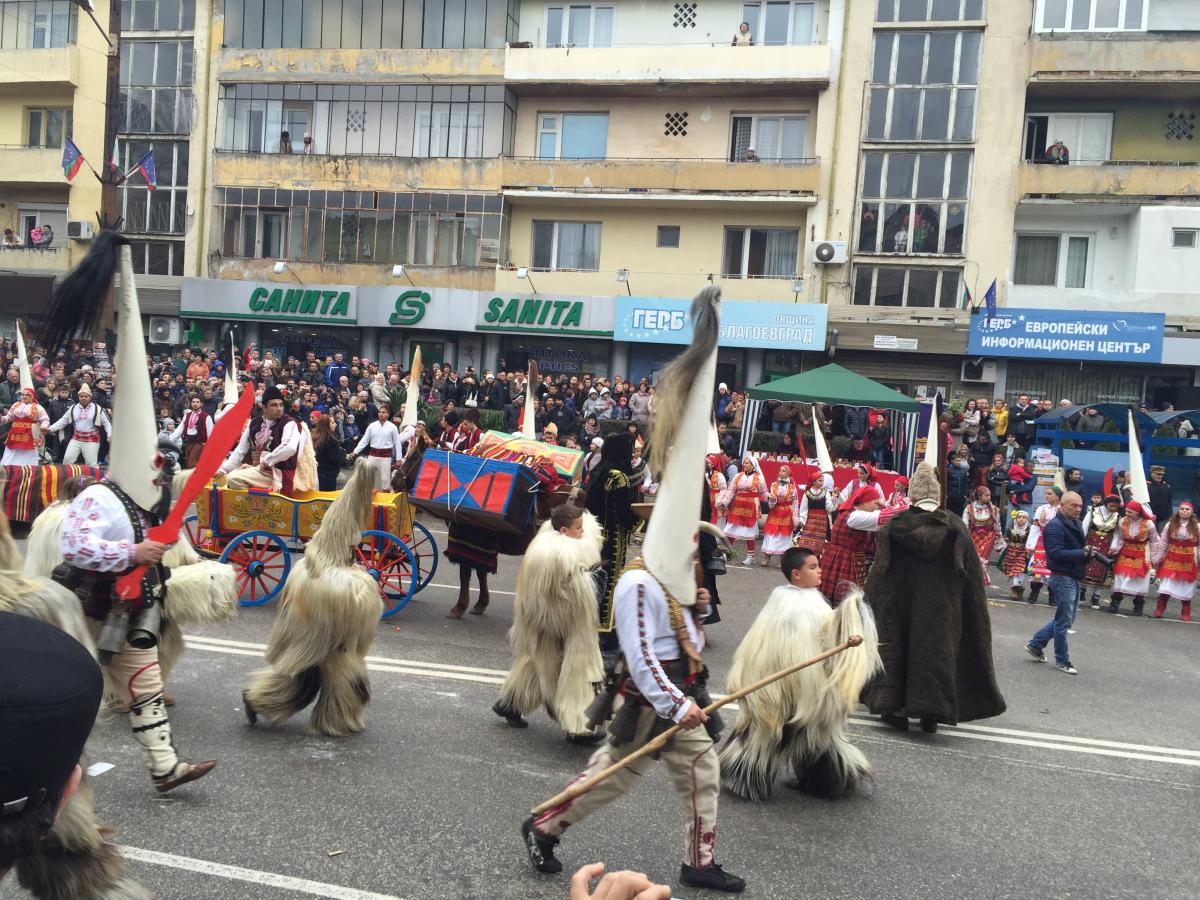
Unfortunately, Creed’s analysis lacks reference to women’s own understandings of their participation in these events. Why do individual girls and women choose to participate? Who were the first ones to do so, and via what mechanisms? Have self-conscious reasons for their participation shifted over the past 50 years? Is it just because it seems like a fun thing to do, or does it come from an explicitly nationalistic desire to participate in and continue a ritual seen as linked to Bulgarian identity? Do women ever take informal leadership or organizing roles (other than that of the figurehead of the local cultural administrator established under communism)? How do female participants conceptualize the manner in which their gender relates to their participation, if indeed they reflect upon it at all?
I was still puzzling over the question of demographics when a large group alighted from a bus across the street and entered the parking lot. With barely a warning, several men raised zurlas to their lips and, with a tapan (drum) heartbeat, began to play. It was a sound unlike anything I have experienced before, and something about it almost brought me to tears. The zurla is a double-reed instrument with a timbre that falls somewhere between that of a beginning oboe student and that of the gaida (bagpipe). It particularly evoked the latter in the festival context, in which a small ensemble of 3-4 players relied on some playing a bagpipe-like drone while others performed the melody.
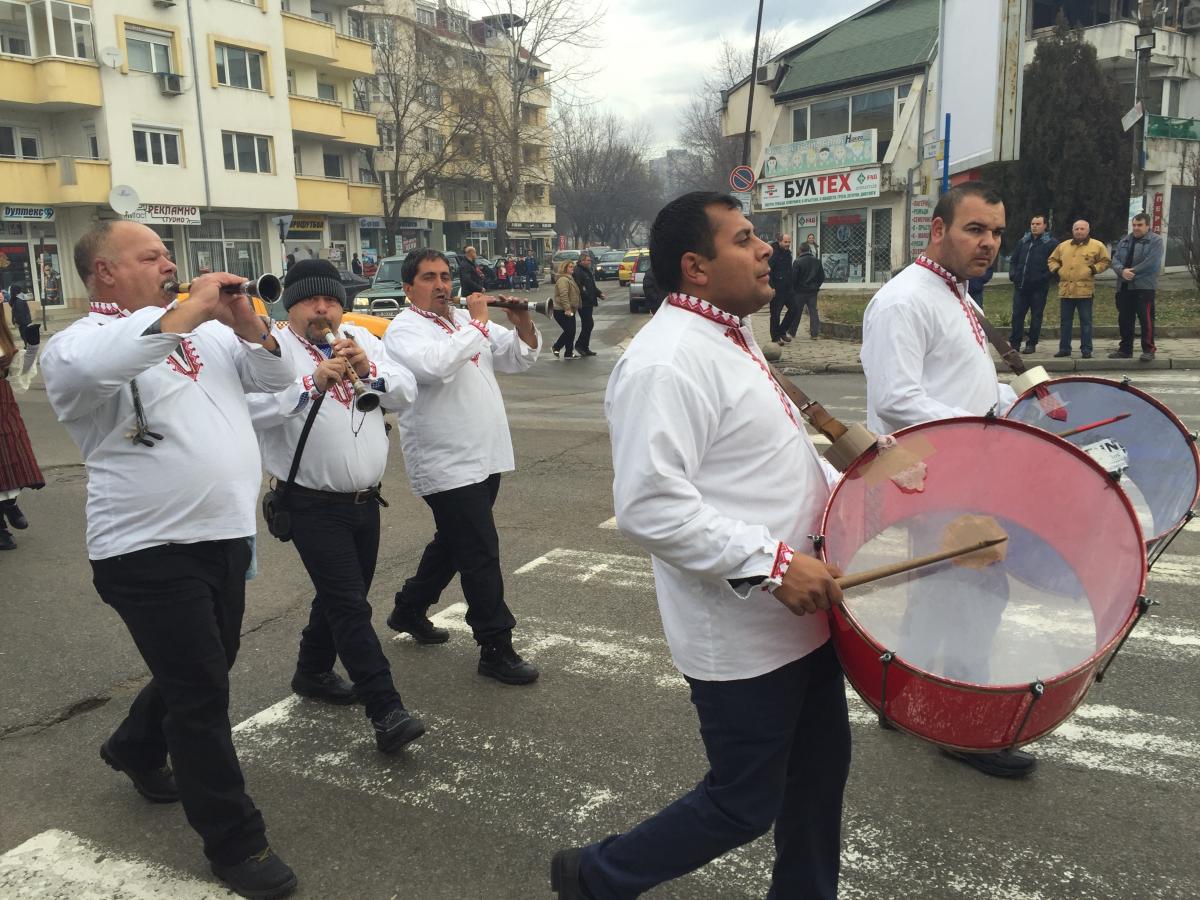
Throughout the day, zurla-tapan ensembles accompanied a majority of participant groups, another feature that distinguished the Blagoevgrad festival from the others I attended. In fact, nowhere else in the time I have been in Bulgaria have I even encountered a single zurla. Originally, I guessed that this scarcity might have been due to the dominance of Thracian instruments and styles in nationalized folklore and possibly to the instrument’s lack of suitability for a folk orchestra. I have since learned that its erasure has much darker roots. Zurla, unlike kaval or gaida, was historically an instrument played only by Roma. The Zhivkov regime actually banned the instrument in 1983 as part of its “assimilation” campaign (Carol Silverman, personal communication), which aimed at erasing differences not interpreted as ethnically and historically Bulgarian. This era saw the government forcing ethnic minorities to slavicize their names and abandon certain cultural practices. According to Silverman, people continued playing the instrument “in private settings even through musicians were fined and went to jail.” The instrument miraculously survived and Roma particularly in the Pirin region still play the zurla today.
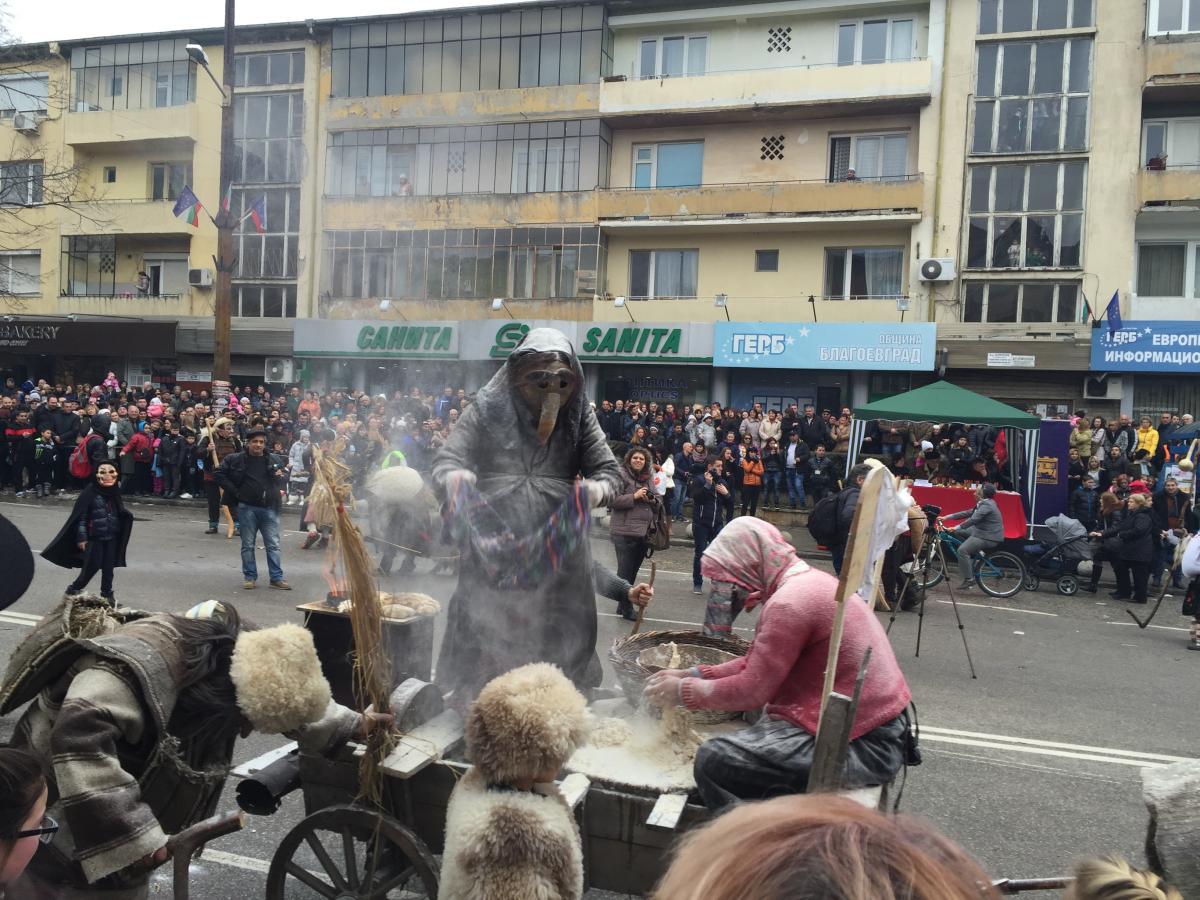
In my opinion, the Blagoevgrad festival had several defining characteristics: the long fur of the costumes, the presence and prevalence of the zurla, the all but absence of masks and bells, the presence of live animals, and the chaos in front of the judges. The presence of women was not unique to Blagoevgrad, but it was particularly noticeable there because fewer people were wearing masks. In my next post about the kukeri festivals, I will discuss the Pernik festival and use it as a way to share what I have learned about the history of mumming in Bulgaria and how it evolved from village ritual to commercial festival.
Correction: The initial version of this post incorrectly identified the zurla as a duduk.
Update: The paragraph on the scarcity of the zurla has been updated to include information about the reasons for the instrument's scarcity relative to other folk instruments.
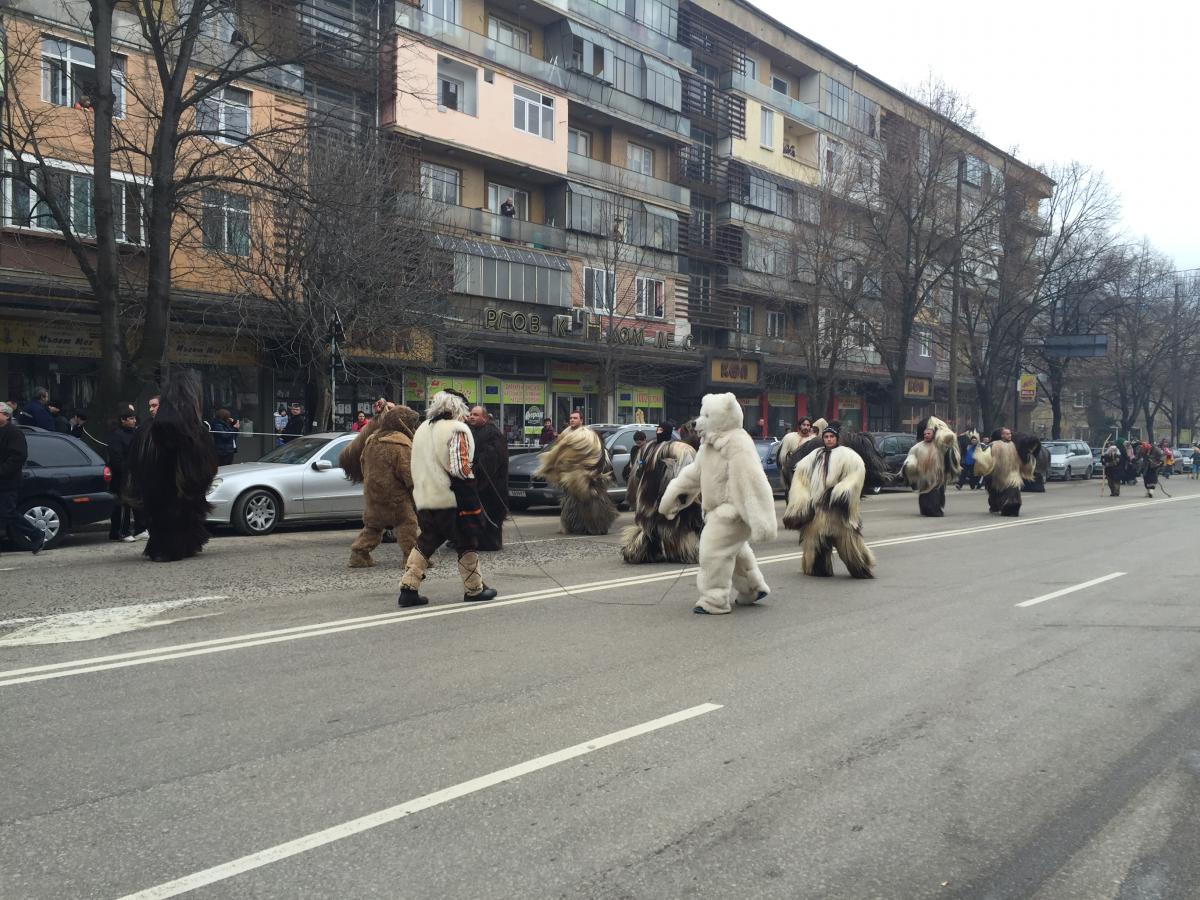
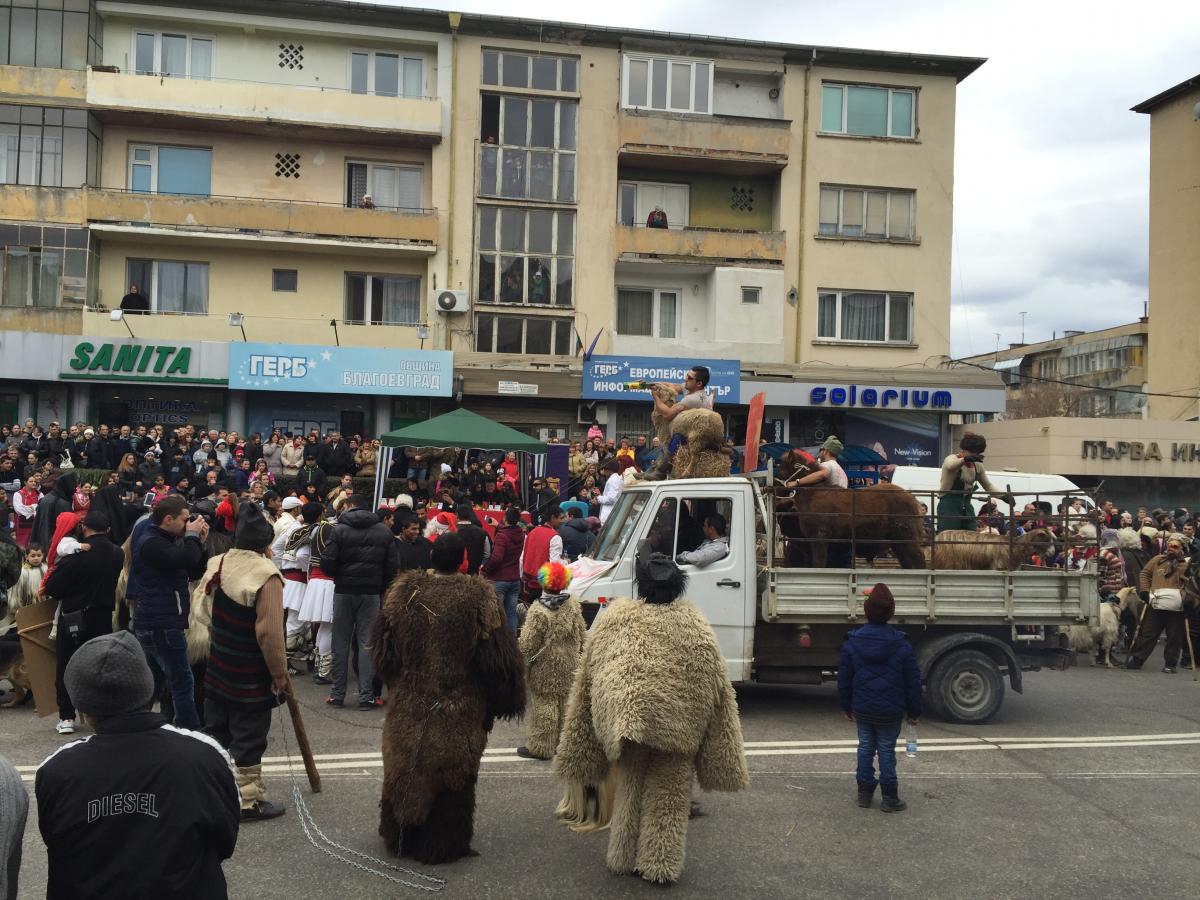
Comments
Fascinating
That is very fascinating, You're an excessively skilled blogger.
I've joined your feed and stay up for in quest of more of your wonderful post.
Also, I have shared your site in my social networks